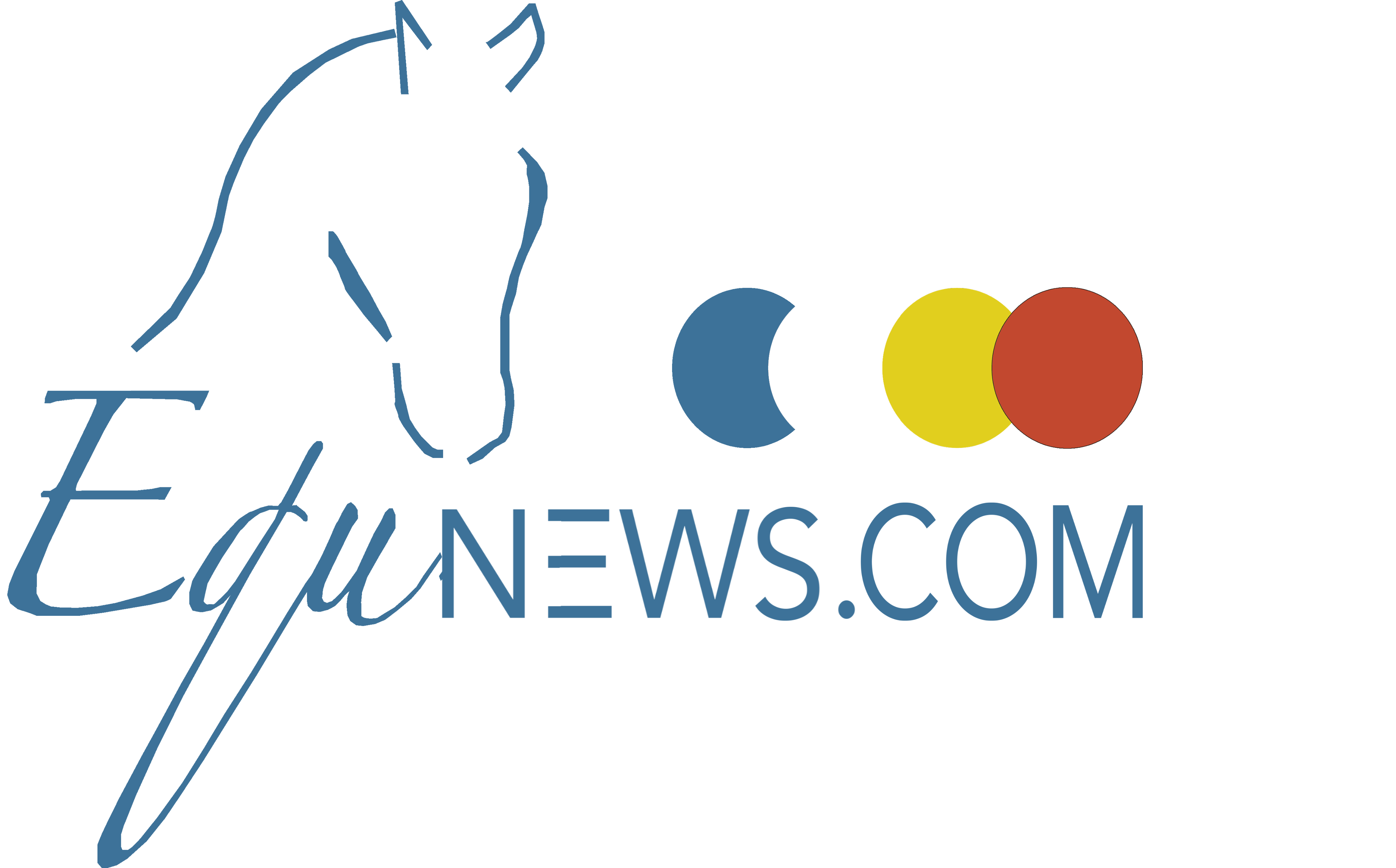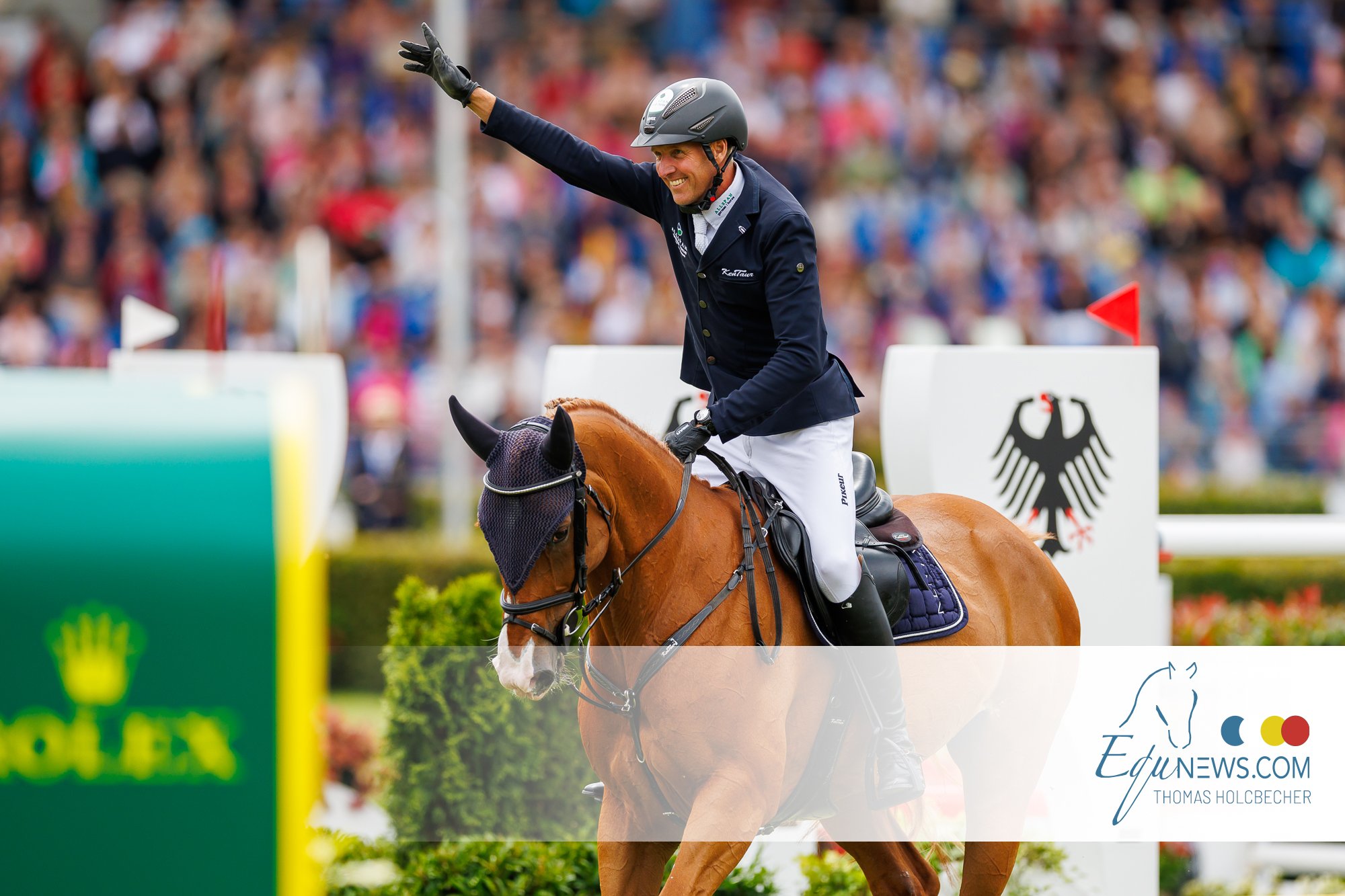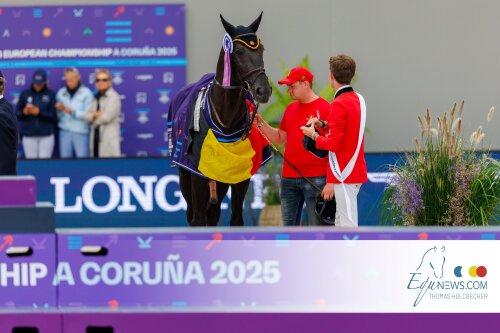The DSP bred mare, DSP Chakaria (Chap I – Askaria 3 x Askari, breeder: Martin Jürgens) produced a sensational performance during her three clear rounds in the CHIO Aachen Rolex Grand Prix. She showed under the saddle of André Thieme an unbelievable fighting spirit. DSP Chakaria was bred by Martin Jürgens from Polzow – a town located in East-Germany, very close to the Polish border. Martin Jürgens expresses what is like to have bred a horse like DSP Chakaria: “It fills me with immense pride to have bred a horse like her. It is also incredibly heartwarming to see how the entire region supports and cheers for André and DSP Chakaria. Everyone stands behind them.”
Powerful hindquarters
DSP Chakaria was born under the name Carelia. Mr. Jürgens fondly recalls her as a foal. He shares: "She was not a standout foal, but she was very well-behaved and easy to handle, much like she is today. She was not particularly wild, however, when it came to riding, initially she was very challenging." Her mother Askaria 3 (Askari – Levisto Model x Levisto, breeder: Hans-Joachim Wegt) is incredibly special to Martin Jürgens: “Askaria 3 was always a special mare. When you rode her [Askaria] she was more pleasant and easier to handle. She had a remarkable and rapid career with us. She had two foals with us, one of which was DSP Chakaria. Similarly, DSP Chakaria had two foals before being further trained. Askaria 3, successfully competed at the 1.40m level by the age of seven – she was sold to Heiko Schmidt, who subsequently sold her to Pius Schwizer. With Pius, she quickly advanced, competing in Paris under the Eiffel Tower. Later, she was sold to Dubai. Askaria 3 was simpler to ride compared to DSP Chakaria, but she transferred her powerful hindquarters to her daughter. With Chap I, the front leg technique of DSP Chakaria was improved – Askaria 3 had a slightly long front leg when jumping.”
Jürgens continues about why he used Chap I for Askaria: “Back then, Chap I was stationed at the Prignitz breeding facility at the Brandenburg State Stud in Neustadt/Dosse. The manager of the breeding facility was a good friend of mine. Chap I was highly regarded in the show jumping community and his stud fee was quite reasonable, and so we decided to use him. Askaria 3's second foal was sired by the stallion Cellestial (Cantus - Wilett x Windesi xx, breeder: Hauke Seemann). He was also a very good horse, but not nearly of the same caliber as DSP Chakaria.”
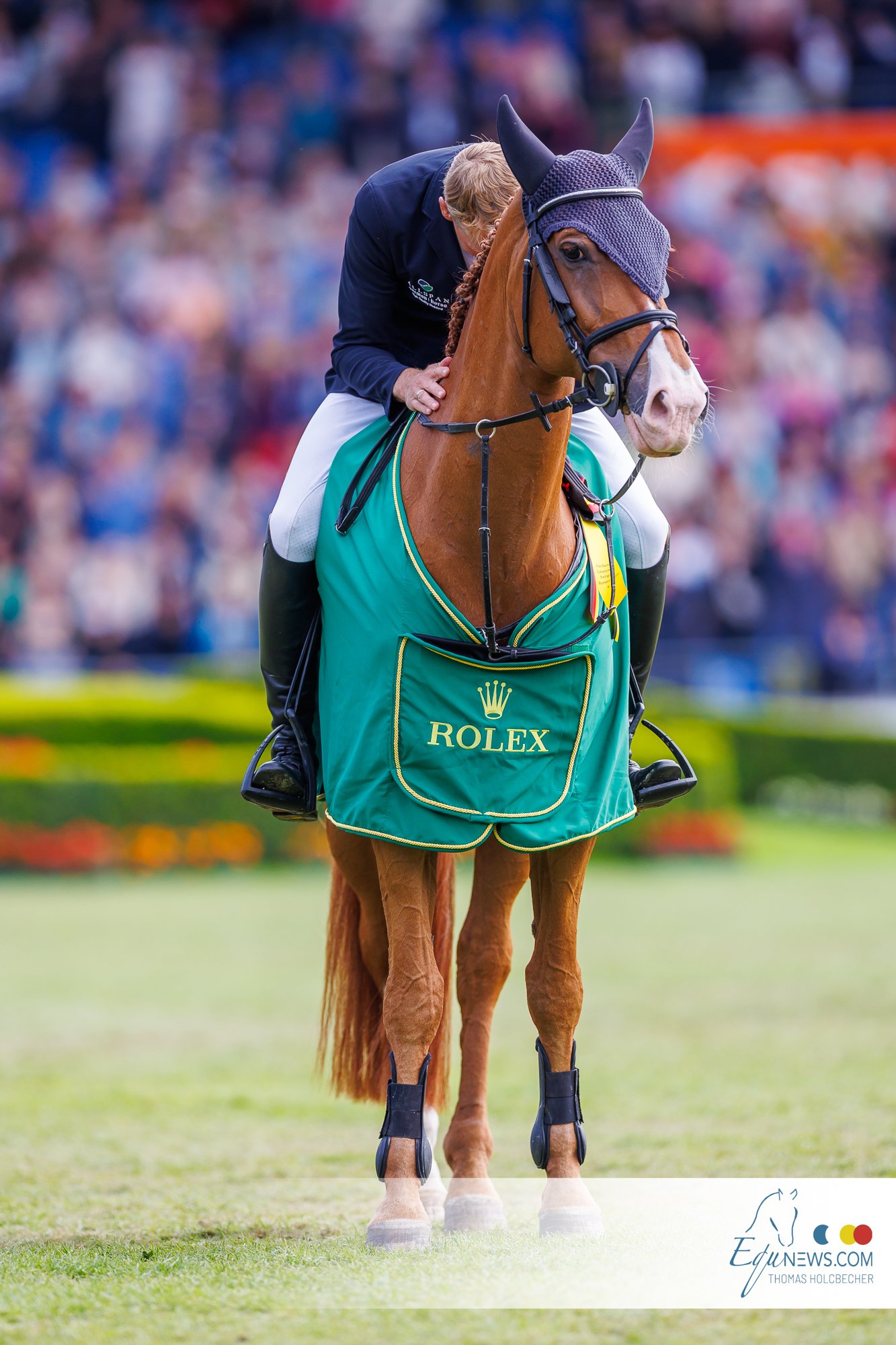
This line started with Askaria 3, Martin Jürgens recalls how he purchased her: “I had wanted to buy her when she was a foal, but it just was not possible then. She was a very elegant horse and had been awarded the state premium mare title. Then, my friend Christian Lehmann called to let me know that the breeder was looking to sell her. Without hesitation, I grabbed a transporter and some cash, went over, bought her, and brought her home. That's how she came to be with us.”
Martin Jürgens knew that this lineage had the potential for greatness. Askaria 3 was an exceptional mare. He also purchased Askaria 3’s mother, Levisto Model (Levisto Z – Kalifornia x Kolibri, breeder: Hans Joachim Wegt). He recalls: “Mr. Wegt became unwell, and I had purchased several horses from him before. We were always happy with those horses; they were good quality. I was able to buy her and also breed a few fillies from her, ensuring that the lineage remains with us. Levisto Model has a good but strong character; she would not be driven away from the feed trough in the herd. She only did a mare performance test as a three-year-old and never competed in show jumping herself. However, she has produced offspring with successful sports careers. She passed on her ambition and toughness, and her offspring were all quite beautiful.”
Mr. Jürgens was not familiar with Levisto Model's mother. He had only seen her in the field. Tragically, Kalifornia's life was cut short. She and a few other horses had escaped from the pasture and were involved in a car accident, which she did not survive. She only had two foals, one of which was the filly, Levisto Model.
Christian Lehmann is very familiar with the first four generations. He knew Askaria 3's breeder well and says: "Hans-Joachim Wegt was a forward-thinking breeder with a keen eye for quality stallions. He was particularly fond of the stallion Levisto Z (Leandro - Chica Bay x Carolus I, Stamm 4965, breeder: Klaus Peter Wiepert). He really believed in the breeding potential of Levisto Z. His career as a breeding stallion began after his approval in 1999 in Holstein, initially at the Neustadt/Dosse State Stud. Wegt purchased Kalifornia, the great-grandmother of DSP Chakaria, at a horse market. She was a large angular mare. Her sire, Kolibri (Kobold I - Lorelei x Lapis), had significantly contributed to the quality and power of the horses in their breeding programme. Levisto Z took it a step further by modernizing the horse types and adding rideability. His rideability showed when he was just four-years-old when he began participating in stallion parades. Recognizing this potential, Hans-Joachim Wegt skilfully bred Levisto Z with Kalifornia to produce the Levisto Model. With Askari 3 he added energy to the mareline.”
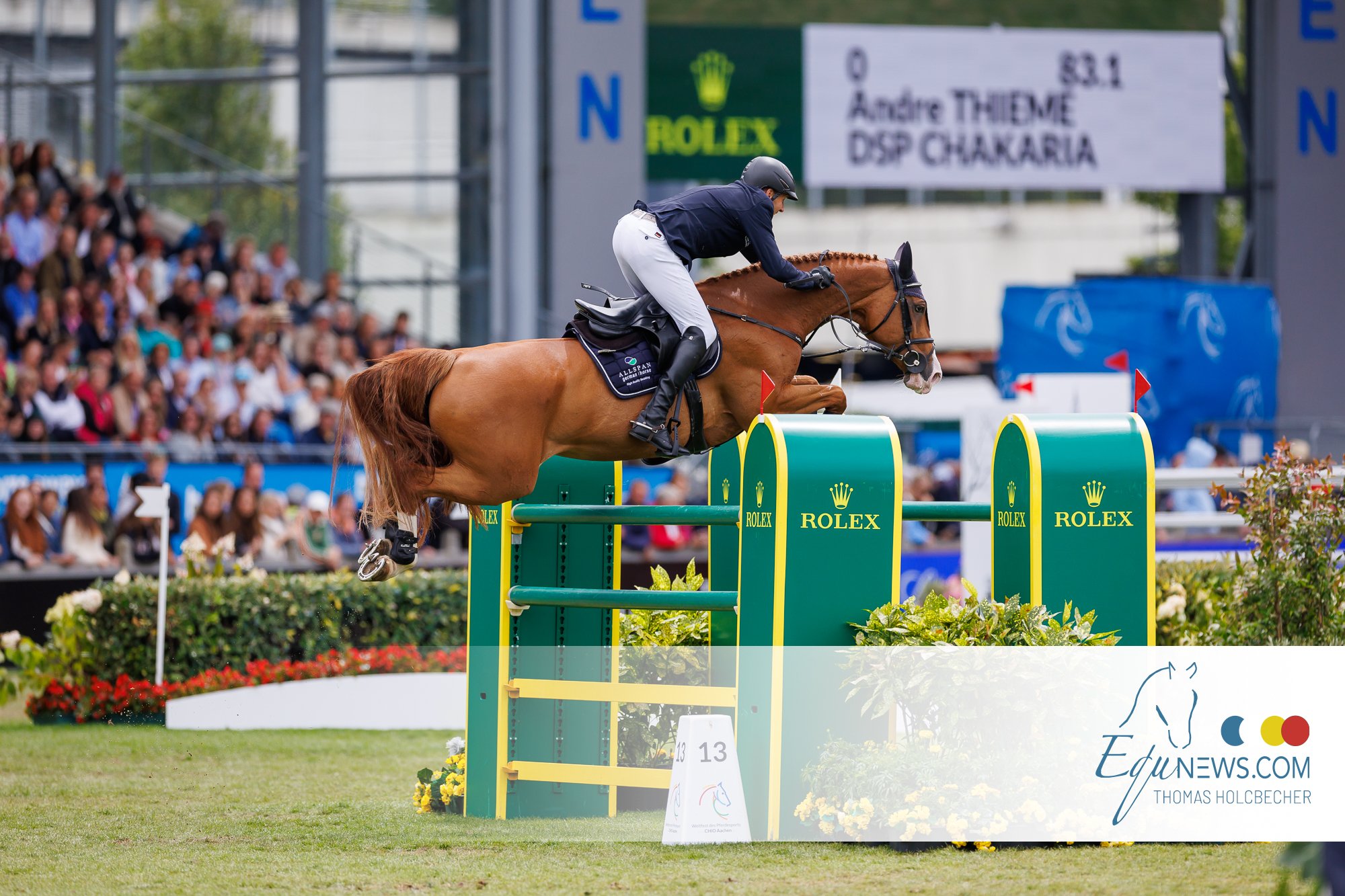
DSP Chakaria as a broodmare
Before DSP Chakaria began her showjumping career, she foaled two offspring. She was paired with the stallion Diarano (Diarado - Parjella x Patrick xx, breeder: Martin Jürgens). Speaking about DSP Chakaria's offspring, Anna Ebel-Jürgens, Martin Jürgens’ daughter, shares the story behind this pairing: "This decision was influenced by the fact that he was our first homebred approved stallion. He descends from our foundational broodmare Parjella (also bred by my father). Parjella had already produced several horses that I successfully competed with up to 1.40m and beyond. We wanted to combine our two foundational bloodlines."
Dackaria was the first born out of this line, Anna continues: “She has a lot of scope and is careful. Not quite as lively as DSP Chakaria herself but bears some resemblance to her. She will very likely become a broodmare again.” Dackaria jumped at 1.40m.
Why Chacoon Blue?
Anna explains: “He passes on energy and an excellent forelimb technique. Additionally, he was highly sought after as a sire, and we wanted to incorporate his bloodline into ours. We missed the opportunity to use Chacco Blue while he was alive. Since Chacoon Blue is reputed to have similar and strong breeding qualities, we chose him. The full brother of Dackaria, Dackario, competed at 1.40m under the saddle of Ulf Ebel and is now nine years old.”
History of this East German bloodline
The mother line of DSP Chakaria is an old East-German bloodline. Christian Lehmann is well-acquainted with the older generations, having worked for the Neustadt-Dosse State Stud for 40-years. He explains: “I now manage the stallion station in Prignitz for the Neustadt-Dosse State Stud. I am employed by them and I support breeders within a radius of 60 to 100 km with the mare management. The stallions listed in the dam line, starting from Kurioso through to the earlier generations, were all stationed at Deckstelle Prignitz and came in the time period of 1958 till 1990 from the State Stud Redefin. This practice continued for multiple generations. Before that, the stallions from State Stud Neustadt-Dosse were sent to Deckstelle Prignitz. The reason behind this is that after World War II, when we were in the Soviet occupation zone, the administrative districts were reorganized. We had the districts of Schwerin, Magdeburg, and Potsdam. These districts were slightly smaller than the states, so our regional affiliation sometimes shifted by only 10 km. As a result, our area came under the jurisdiction of the Redefin State Stud instead of Brandenburg, where the Neustadt-Dosse State Stud is located. During the era of Kurioso and Gladiator, the focus was not on sport, as these horses were primarily used for work. The shift towards sport in this line began with Kolibri and was further enhanced by Levisto Z.”
The combination of outstanding genetics and careful management has produced horses with exceptional capabilities, proving that the foundation laid by earlier generations has been built upon with great success. DSP Chakaria's story, enriched by the contributions of her progenitors and the people who nurtured her talents, stands as a testament to the enduring power of thoughtful and strategic breeding in the world of showjumping.
